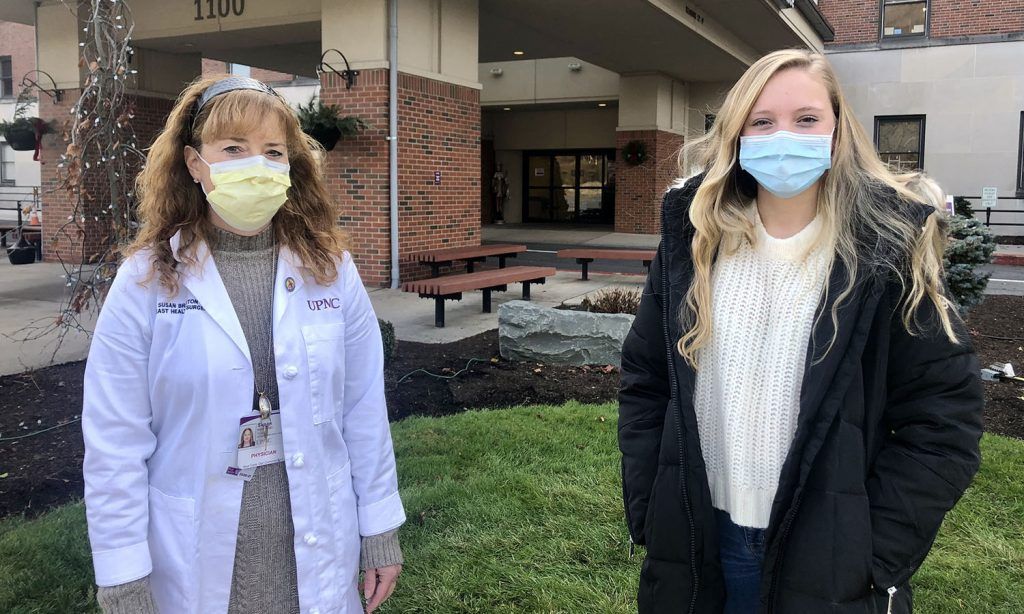
While cases of COVID-19 amp up across central Pennsylvania and residents dispute whether wearing masks can help stop the spread, two local women are working hard to do all they can to encourage the practice.
“I know there are some that feel, strongly, that it doesn’t have a benefit,” says Dr. Susan Branton, medical director of UPMC’s Breast Health Center in Williamsport.
Like her medical profession colleagues, Branton knows wearing a mask can help prevent the spread of airborne viruses including COVID-19.
“It’s a small ask for a big benefit, to protect yourself and to protect others,” she adds.
Branton’s daughter, Sam, is a freshman at the University of Pittsburgh, where, she says, people are far more willing to always wear a mask than those in Lycoming County.
“It’s an interesting trend. I noticed that people in the city were more compliant (with mask-wearing recommendations). Here, more people don’t think it’s necessary,” Sam says.
When the coronavirus pandemic first was declared, people in the United States appeared to work more cohesively to follow basic preventative methods such as (1) wear a mask; (2) wash your hands; (3) stay home as much as possible; and (4) keep a safe distance from others.
“We were pretty compliant for a while,” Dr. Branton says. “But lately that trend on following the precautions has been relaxing.
“I think it seems like people are getting tired of it all,” she adds. “They’re experiencing a lot of fatigue from trying to maintain high rates of masking. It’s wear and tear.”
But figures from the state Department of Health indicate that now is no time to relax.
Lycoming County began to see an upward trend in cases in early November and the county now has over 3,900 cases with 65 deaths, according to the state Department of Health. Of the total deaths, 55 are recorded in long-term care facilities. Sunday’s daily case number hit a record 248.
“The hope is, with the uptick in cases, we’ll get back to being compliant,” Branton said.
Her daughter agrees such a move would “be a lot better” for people of all ages who live in any area.
“High school and college students are wearing masks,” says Sam, who is a biology major on a pre-med track. “Kids have a lot of motivation right now. We want to get back to somewhat of a normal existence.”
Students who were members of the Class of 2020 endured a senior year unlike any other.
“I missed my high school graduation and, at college, all of my classes are online,” Sam says, noting that her experience so far lacks the social interaction that had been synonymous with a college education.
Her university limited the number of people allowed in a dorm room at one time. And, in the spring, all of her classes will be remote for the first two weeks, she says, then the university will reevaluate the situation.
Sam says she believes that peer pressure may have an impact on whether, or how often, people wear a mask.
“If you’re not doing it, you might feel pressured” if you hear or see that other people around you wear masks, she says.
More importantly, she says, is the fact that “you obviously don’t want to be the person who makes (someone) sick. Wearing your mask is the best way to (prevent) that.”
For her part, Sam sees mask wearing as a two-prong measure to not only protect herself but to protect her mother so she can continue to help others.
“Her patients need her,” Sam says.


